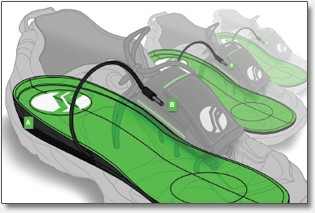Walk or Run with SolePower

By Mary Rose Thomas-Glaser
We all know that walking and running are good for our health and waistline. The energy our bodies require to move is generated by burning calories which helps to control weight. Did you know that you also generate enough mechanical energy with each step to power a light bulb, yet most of it is wasted on shoe wear?
Harnessing the Power of Human Motion
In 2012, Hahna Alexander and Matt Stanton were among of a group of engineering students at Carnegie Mellon University tasked with developing a product that would benefit their fellow students for a class project. The team designed a shoe that captured energy generated by walking to power LED shoe lights and enhance student night-time safety on campus. The innovative concept earned the group an "A" on the project.
Alexander and Stanton realized the potential to build on the class project success, devising an improved design that could store more power and benefit people around the globe. SolePower was launched in 2012 with support from the CMU Project Olympus and startup accelerator AlphaLab to develop insoles capable of harnessing walking energy to power mobile phones.
They were able to shrink the size of components and create an all-weather, water-resistant insole that can be cut-to-fit. Together the insole and battery pack weigh just five ounces. With $60,000 from a KickStarter campaign, SolePower is ramping up release of its inaugural insoles later this year. SolePower was honored as a winner at the Popular Science's 2014 Invention Awards: "recognition of the innovative, functional, and practical qualities the SolePower insoles have and their ability to make a positive impact in the world."
How SolePower Works
- Energy from each heel strike is converted by a drive train into rotational energy which spins magnetic rotors
- Spinning rotors induces an electrical current in the wire coils
- Generated electricity travels the wire to a lithium-ion polymer battery pack secured on the shoelaces
Currently a 15-mile walk charges a smart phone.
Classroom Discussion
- What are your ideas for wearable products that could generate energy?
- What are the different types of energy? What are the ways the energy is stored?